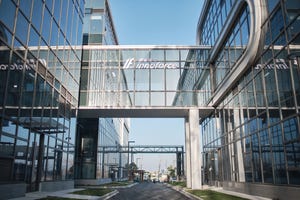
Cell and gene therapy (CGT) biotechnology companies Opencell Technologies and Adva Biotechnology have announced a strategic partnership that integrates platforms from both companies in support of an end-to-end manufacturing service.
"We are thrilled to collaborate with Adva Biotechnology, whose state-of-the-art manufacturing platform aligns perfectly with our Softporation technology," said Behzad Mahdavi, executive chairman of Opencell Technologies. "This partnership will enable us to provide a seamless, integrated solution that is not only robust and scalable but also exceptionally gentle on cells, ensuring superior outcomes for patients worldwide while leveraging the full potential of Adva's technology."
Opencell will combine its Softporation transfection technology with Adva’s ADVA X3 advanced manufacturing platform, aiming to improve efficiency and scalability in CGT manufacturing. Opencell’s Softporation technology offers a scalable continuous transfection process, while ADVA X3 offers a fully automated platform for manufacturing cell therapies.
Automation in CGT manufacturing is an ongoing topic of interest for many companies within the sector, and has been touted before in BioProcess Insider as a way for companies to improve efficiencies. Mahdavi told us that “automation in cell therapy manufacturing offers several critical advantages.”
“It drastically reduces the risk of human error, ensuring greater consistency and higher quality in cell production." He added, “Automation accelerates manufacturing by minimizing manual intervention and allowing for continuous production, which leads to faster therapy delivery and more reliable outcomes. Furthermore, the ability to meet increasing patient demand becomes much more feasible.”
The collaborative offering is currently progressing through development and validation phases with a commercial pilot anticipated for late 2025. However, Mahdavi told us that clients can immediately begin evaluating both systems on a prototype basis to assess their compatibility and potential integration. “This early access allows users to explore the benefits while we continue to refine the solution, ensuring it meets the highest standards of performance and reliability.”
Seeds for the Opencell and Adva partnership were unexpectedly sown early this year, when the leaders from both companies – who already knew one another – had a chance encounter at Dulles International Airport in Virginia. “This spontaneous encounter reignited conversations, revealing a shared vision for transforming and streamlining cell therapy manufacturing,” Mahdavi told us. “The project was internally code-named ‘IAD’ after the airport’s designation, marking the beginning of this collaboration.”
Through further discussions, the companies found a way to integrate their technologies in a complementary way. “By formalizing the partnership, we set out to create a robust, scalable solution that addresses key challenges in bioprocessing.”
To overcome challenges, Mahdavi identified quality, quantity, and cost as the three key criteria that manufacturers must master for successful commercialization. “These parameters are often difficult to achieve due to the artisanal nature of many CGT manufacturing processes, which introduces variability, hampers scalability, and drives up costs.” He said that Adva addresses such issues with its automated platform, while Opencell complements that by offering a transfection process “using a showerhead-like structure with hundreds of nozzles to gently and efficiently transfect cells as they pass through.” He said the design ensures a high level of precision and reduces the complexity and cost of transfection process when compared with traditional methods.
The partnership is structured as a non-exclusive commercial agreement. Both companies retain ownership of their respective intellectual property, ensuring continued innovation and flexibility.
About the Author
You May Also Like









